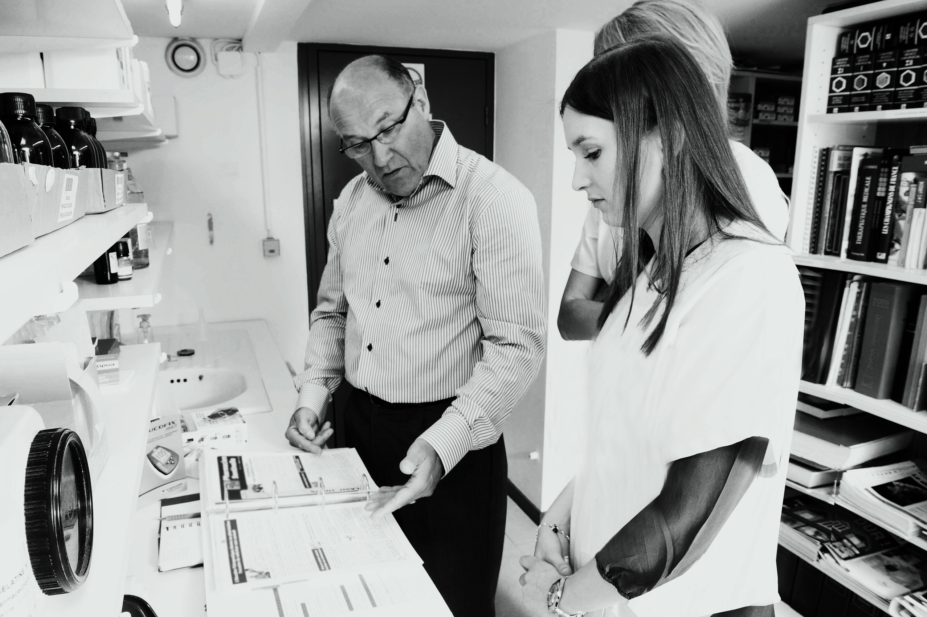
Alamy Stock Photo
The NHS is under strain. Waiting times for GP appointments are increasing and A&E departments are struggling to meet national targets — especially during cold and flu season[1]
. With the ‘NHS long-term plan’ advocating out-of-hospital care and patient self-management[2]
, the public will need to become increasingly reliant on community pharmacy as the first port of call for suspected illnesses, such as cold and flu[3]
.
Community pharmacy teams must be able to deliver consistent and reliable advice to the public around cold and flu symptom management and self-care. This approach is outlined in a previous learning article (see ‘Engaging patient with cold and flu: putting theory into practice’) and materials produced as part of this supplement[4]
. All members of the pharmacy team must have the skills, knowledge and confidence to educate and advise patients of common misconceptions. For example, dispelling the belief that antibiotics are required to treat cold and flu symptoms (see ‘Providing self-care advice for cold and flu keeps antibiotics working’)[5]
.
Not all pharmacies have a structured cold and flu training programme, and a survey of nearly 1,200 Royal Pharmaceutical Society members conducted in April–May 2019 found that 47% of community pharmacists (n=258) had completed their most recent cold and flu training more than 12 months ago. The survey also highlighted a lack of awareness of how pharmacy teams can promote antimicrobial stewardship (AMS) principles when managing patients with cold or flu symptoms
[3].
This article outlines the main steps to help pharmacists and pharmacy teams implement a sustainable cold and flu training programme that aims to deliver a consistent standard of care, affirming community pharmacy’s position as the first port of call for patients with minor illness.
Secure management buy-in
The first step in implementing any training programme is considering how it will align with the organisation’s or company’s objectives. Knowledge of the organisation’s vision and how it relates to national goals for self-care and AMS in the context of cold and flu will facilitate engagement with senior management. If managers are not aware of the training programme, they cannot support its implementation[6]
.
Having a structured cold and flu programme will be of benefit to staff and patients. Being able to communicate the benefits (see Box 1) to others within the organisation is vital to its success.
Box 1: Benefits of implementing a cold and flu training programme
- Identifies existing skills, knowledge and learning needs;
- Ensures consistent public health messaging for cold, flu and antimicrobial stewardship;
- Improves patient outcomes and experience;
- Increases public knowledge of community pharmacy’s role as first point of contact;
- Provides team members with the skills and confidence to conduct opportunistic cold and flu consultations, and engage with patients about other health concerns;
- Minimises variation in practice and promotes a consistent standard of care for patients with symptoms of cold and flu;
- Provides a base to develop additional training programmes focused on other minor ailments.
Assess learning needs
Pharmacists have a responsibility to ensure that all members of the team have the right cold and flu knowledge[7]
. In addition, staff must have the necessary competence and confidence to apply their learning to cold and flu consultations.
A learning needs assessment should be performed for all individuals within the team, including the pharmacist. This will identify existing knowledge on cold and flu, AMS and consultation skills, and help identify areas for development (see Box 2)[8]
.
Box 2: Questions to ask as part of a cold and flu learning needs assessment
General training and development questions:
- What skills do staff currently have?
- What knowledge gaps exist within the team, and what training is needed to close these gaps?
- What challenges do pharmacy team members face and could they be resolved with training?
- What barriers do the pharmacy team face when it comes to participating in training?
- What training have pharmacy team members benefited from in the past and why?
- Is there an existing, relevant training programme that could be improved?
- Is there a way for courses and workshops to be made more accessible to staff?
- How often should this learning needs assessment process be repeated?
Cold and flu specific knowledge and skills:
Determine the knowledge and skills that staff require in order to effectively manage patients with cold and flu symptoms. For example, team members should be able to:
- Effectively engage and communicate with patients experiencing symptoms of cold and flu;
- Discuss appropriate cold and flu management options using a patient centred-approach to joint decision making;
- Provide accurate and consistent advice to patients around self-care and infection control;
- Signpost patients to relevant and trustworthy cold and flu services/public health resources and promote public health agendas;
- Accurately gather and document relevant details of cold and flu patient consultations;
- Apply results from cold and flu data collected to improve team performance and the quality of care provided;
- Assess the value of available publications and resources for antimicrobial stewardship and cold and flu;
- Appraise performance in conducting cold and flu patient consultations;
Pharmacy team members should possess the relevant knowledge and skills to be able to:
- Respect patient beliefs and choices;
- Recognise and manage risks related to each individual patient presentation (e.g. contraindications and co-morbidities);
- Develop and maintain relationships with colleagues woriking in primary care;
- Promote national self-care and public health agendas;
- Appropriately refer patients to the relevant healthcare professional as required.
Source: Adapted from Hennessy-Hicks Training Needs Analysis Questionnaire and Manual, 2011
[8]
Part of the learning needs assessment should include an evaluation of how team members prefer to be trained. This will influence the format in which training is delivered. For example, face-to-face sessions, e-learning/written materials or a combination of these. This will help improve uptake and ensure that training is effective. Different methods of delivering cold and flu training are detailed below.
Face-to-face
This encompasses several delivery methods, including traditional instructor-led training, case-based group discussions and role play.
Instructor-led training is ideal for explaining complex ideas. The instructor (also known as a trainer) facilitates the session, tailoring delivery of content to the level of individuals while also addressing queries.
Case-based group discussions combine theoretical knowledge with clinical practice. Here, cold and flu cases can be taken from routine pharmacy interactions and possible solutions to problems are discussed by the team. This type of training can incorporate role play, where one member of the team assumes the role of the patient and another conducts the consultation as themselves. This is an effective way for individuals to practice and develop their skills, such as communication and consultation.
Face-to-face training sessions allow the team to train together. However, they require a large enough physical space to conduct the training, which can be difficult to do in a small community pharmacy. In addition, all relevant team members will need to be physically present to benefit, which can cause difficulty when working around normal shift patterns.
In addition, training sessions conducted during working hours are at risk of frequent interruptions, and this style of training requires significant preparation time from the pharmacist or manager acting as the facilitator. In this instance, training sessions may need to be repeated or held outside of normal work hours — for example, before opening or after closing the pharmacy. Box 3 outlines what face-to-face learning could look like in practice.
Box 3: Example of cold and flu face-to-face learning
- Short quizzes of cold and flu knowledge (developed by a pharmacist or other team member), based on gaps identified through the learning needs assessment;
- Cold and flu content delivered via instructor-led session (see ‘Engaging patients with cold and flu: putting theory into practice’);
- Role play of cold and flu patient consultation to enable the team to apply knowledge and to practise consultation skills using TED (tell, explain and describe) and ICE (ideas, concerns and expectations) principles (see ‘Making consultations in community pharmacy matter’ and ‘Engaging patients with cold and flu: putting theory into practice’, and ‘Cold and flu consultation pathway for community pharmacy’);
- Learning from training to be re-tested one week after the training session with observations of consultation skills applied during routine practice, followed by feedback.
Structured self-learning
This process typically involves reading books or journals, either in print or online, or completing e-learning modules. Print articles are often limited to words and images, whereas e-learning provides opportunities for learning to be delivered via interactive videocasts, online lessons and quizzes. Both of these styles of structured self-learning can be completed in the learner’s spare time.
Materials must be up to date, particularly when attempting to cover the latest advancements in relevant topics, such as AMS. There may be also additional costs associated with employing a third party to supply this cold and flu training. The print and online cold and flu training produced by The Pharmaceutical Journal as part of this supplement can be adapted to help ensure the team’s consultation skills meet the outlined standard for community pharmacy[9]
.
Engage staff
Both awareness and engagement are required from staff for any training programme to have an impact and to be beneficial to patients. Team members will require support and encouragement to utilise their knowledge, engage with patients and contribute to the consistent approach to cold and flu management outlined in this supplement.
As part of this process, it is important to identify members of the team who are willing and able to deliver the training themselves. A ‘train the trainer’ approach can be adopted, where the pharmacist trains other team members to deliver the cold and flu training, contributing to the development of both the pharmacist and the team[10]
. Having an in-house training facilitator creates a ‘champion’ for cold and flu who is able to offer ongoing support to the team. Other benefits include having flexibility in the delivery of the training, the development of leadership skills, the formation of a culture of accountability and an improvement in the reporting and tracking of how the well the training is being received and its impact on the organisation.
Review and evaluate progress and performance
Knowledge gained from cold and flu training sessions should be tested and new skills should be practised at regular intervals in order to consolidate learning
[6].
The cold and flu training programme must be regularly reviewed if learning is to be sustained in the longer term. This can be facilitated through regular documentation and recording of cold and flu activity and training — especially during the cold and flu season (see Supplementary Figure 1 and 2).
There is a range of measurables staff should record, to assess performance, including:
The number of:
- Patients presenting with cold and flu consultations per month;
- In-depth patient consultations completed per month;
- Positive outcomes observed per month as a result of cold and flu training.
Details of any interesting consultations (see ‘Supplementary files 1: Cold and flu patient consultation record sheet’ and ‘Supplementary file 2: Monthly record sheet’), such as:
- Interactions that have allowed team members to apply their learning;
- Interactions that have resulted in a positive impact on patients;
- Where additional referral was required;
- Where patient satisfaction or dissatisfaction was expressed.
It is important to answer the following questions to determine the lessons that have been learnt:
- What did not go as well as it could have?
- What factors contributed to this outcome?
- How can this be addressed to minimise the risk of this happening again?
There is a need to identify areas for improvement and how these should be addressed within a specified time frame. Any insights gained should be shared with the team and, where possible, across the sector to aid delivery of a nationally consistent standard of care. This could be done, for example, by presenting data at pharmacy conferences or publishing results of interventions in pharmacy journals.
Box 4 outlines the main factors that an impactful cold and flu training programme would include. The Table provides a summary of the steps and main considerations to take into account when implementing a cold and flu training programme in the pharmacy. Each pharmacy team will have its own challenges and requirements, so it is important to follow the steps outlined in the Table and adapt any training programme to the needs of the pharmacy team to aid successful implementation.
Box 4: What does a good cold and flu training programme look like?
- It has a designated cold and flu training champion;
- It has support from senior management;
- It meets the learning needs of team members identified through a learning needs assessment;
- It is aligned to organisational and national NHS public health goals;
- It has clearly outlined objectives and metrics to measure performance and impact;
- It contains learning content that is relevant, accurate, up-to-date and from a trustworthy source;
- It is reviewed regularly to ensure accuracy;
- It is engaging and interactive;
- It ensures team members have opportunities to consolidate and apply learning;
- It lists local services or sources of information you can signpost the patient to.
| Steps | Considerations |
|---|---|
| 1. Seek buy-in from senior leadership |
|
| 2. Perform a learning needs assessment |
|
| 3. Engage staff |
|
| 4. Review and evaluate progress |
|
| Source: Public Health England and NHS Health Education England [6] | |
Citation:
The Pharmaceutical Journal, September 2019. doi: 10.1211/PJ.2019.20206995
References
[1] Baker C. NHS Key Statistics: England, May 2019. 2019. Available at: https://researchbriefings.parliament.uk/ResearchBriefing/Summary/CBP-7281 (accessed September 2019)
[2] NHS England. NHS Long Term Plan. 2019. Available at: https://www.england.nhs.uk/long-term-plan/ (accessed September 2019)
[3] Robinson J. Community pharmacy ‘must provide consistent care’ for cold and flu. Pharm J 2019;303(7929):S2–S3. doi: 10.1211/PJ.2019.20206798
[4] Kam A, Stewart K, Dowdall M. Engaging patients in a cold and flu consultation: putting theory into practice. Pharm J 2019;303(7929):S8–S10. doi: 10.1211/PJ.2019.20207035
[5] Ashiru-Oredope D. Providing advice on self-care for cold and flu will help keep antibiotics working and counts as good antimicrobial stewardship. Pharm J 2019;303(7929):Suppl:S4. doi: 10.1211/PJ.2019.20206996
[6] Public Health England & NHS Health Education England. Making every contact count (MECC): implementation guide. 2016. Available at: https://learning.wm.hee.nhs.uk/sites/default/files/mecc_implementation_guide.pdf (accessed September 2019)
[7] Williams A. Pharmacy leaders must train and support teams to meet the needs of patients with joint pain. Pharm J 2019;302(7924):S6. doi: 10.1211/PJ.2019.20205687
[8] Hennessy DA & Hicks C.M. Hennessy-Hicks Training Needs Analysis Questionnaire and Manual, 2011. Available at: https://www.who.int/workforcealliance/knowledge/HennessyHicks_trainingneedstool.pdf?ua=1 (accessed September 2019)
[9] Kam A, Stewart K, Dowdall M. Making consultations matter. Pharm J 2019;303(7929):S5–S7 . doi: 10.1211/PJ.2019.2020699
[10] NHS Education for Scotland. Train the trainer’s toolkit. 2012. Available at: http://www.knowledge.scot.nhs.uk/media/6866097/trainthetrainers__final_.pdf (accessed September 2019)



